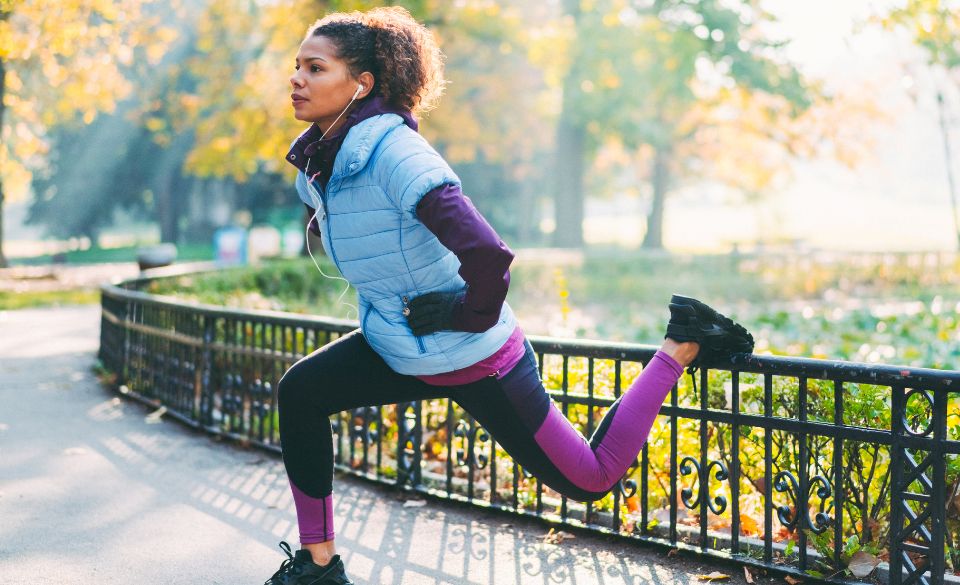
Roman Split Squat – All You Need To Know
Page Contents
Are you looking to strengthen and tone your lower body muscles? The Roman split squat is a popular exercise that targets the glutes, hamstrings, and quadriceps. It is a unilateral exercise, meaning it works one leg at a time, helping to improve muscle imbalances and asymmetries. However, if you are unable to perform the Roman split squat or are looking for some variety in your workout routine, there are several alternative exercises that can help to target the same muscle groups.
In this blog post, we will explore the Roman split squat and its benefits, as well as provide some alternative exercises that can be incorporated into your lower body workout routine. Whether you are a beginner or a seasoned athlete, these exercises can help to improve your strength, balance, and coordination while targeting your lower body muscles. So, let’s dive in and explore the world of lower body exercises!
What Is A Roman Split Squat?
A Roman chair squat is a variation of the squat exercise that utilizes a Roman chair or hyperextension bench. This exercise primarily targets the glutes, hamstrings, and lower back muscles while also engaging the quadriceps and calves. It is an effective way to build strength, improve balance and coordination, and increase hip mobility and flexibility.
The Roman chair squat is an excellent exercise for individuals looking to build lower body strength and improve their balance and stability. It is also a great exercise for athletes and individuals recovering from lower body injuries, as it places minimal stress on the joints while still providing a challenging workout. By incorporating the Roman chair squat into your workout routine, you can target your glutes, hamstrings, and lower back muscles and achieve your fitness goals.
How To Do A Roman Split Squat
A Roman split squat, also known as a Bulgarian split squat, is a challenging lower body exercise that targets the glutes, hamstrings, quadriceps, and calves. It is a unilateral exercise, meaning it focuses on one leg at a time, which helps to improve muscle imbalances and asymmetries.
To perform a Roman split squat, begin by standing in front of a bench or sturdy elevated surface. Place the top of one foot on the bench, with your other foot positioned a few feet in front of the bench. Keep your torso upright and your core engaged throughout the exercise.
Lower your body down towards the ground by bending your front knee, keeping your weight in your heel. Make sure your knee tracks over your toes and does not cave inwards. Descend until your thigh is parallel to the ground, then pause briefly before pushing yourself back up to the starting position. Repeat for the desired number of repetitions before switching legs.
You can increase the intensity of this exercise by holding a weight in each hand or by using a resistance band around your front foot. You can also perform a jump split squat by jumping explosively as you switch legs.
Roman Split Squat Benefits
The Roman split squat, also known as the Bulgarian split squat, is an effective lower body exercise that offers several benefits. In addition to targeting the glutes, hamstrings, quadriceps, and calves, the Roman split squat can also help to improve muscle imbalances and asymmetries.
One study published in the Journal of Strength and Conditioning Research found that the Roman split squat was more effective at activating the gluteus maximus and biceps femoris muscles than the traditional back squat. The researchers concluded that the Roman split squat may be a more effective exercise for targeting these muscles, especially in individuals with weak glutes or hamstrings.
Another study published in the International Journal of Sports Physical Therapy found that the Roman split squat was an effective exercise for improving balance and stability in individuals with chronic ankle instability. The researchers noted that the exercise helped to increase ankle range of motion and reduce pain, while also improving balance and stability.
The unilateral nature of the Roman split squat also makes it a useful exercise for addressing muscle imbalances and asymmetries. A study published in the Journal of Sports Science and Medicine found that incorporating unilateral exercises like the Roman split squat into a training program helped to improve muscle imbalances and increase overall strength and power.
Incorporating the Roman split squat into your workout routine can help to improve lower body strength, increase muscle activation, improve balance and stability, and address muscle imbalances and asymmetries. Try adding this challenging exercise to your next lower body workout for maximum benefits.
Alternative Exercises
While the Roman split squat is a highly effective lower body exercise, there are several alternative exercises that can also help to target the same muscle groups. These alternatives can be useful for individuals who may have difficulty performing the Roman split squat due to balance or mobility issues, or for those who simply want to add some variety to their workout routine.
Lunges: Lunges are a classic lower body exercise that can help to target the glutes, hamstrings, and quadriceps. They are a great alternative to the Roman split squat as they also work the lower body muscles in a unilateral manner, helping to improve muscle imbalances and asymmetries. There are several variations of lunges, including forward lunges, reverse lunges, and lateral lunges.
Step-ups: Step-ups are another effective lower body exercise that can be a good alternative to the Roman split squat. They can help to improve balance and coordination, while also targeting the glutes, hamstrings, and quadriceps. To perform a step-up, simply step onto a sturdy elevated surface with one foot, then push up through your heel to bring your other foot up onto the surface.
Single-leg deadlifts: Single-leg deadlifts are a challenging exercise that can help to target the hamstrings, glutes, and lower back. They are also a unilateral exercise, meaning they help to address muscle imbalances and asymmetries. To perform a single-leg deadlift, stand on one foot and hinge forward at the hips, reaching your opposite hand towards the ground. Keep your core engaged and your back straight throughout the exercise.
Glute bridge: The glute bridge is an excellent exercise for targeting the glutes, hamstrings, and lower back. It is a good alternative to the Roman split squat as it can be performed without any equipment and is easier to learn. Simply lie on your back with your knees bent and feet flat on the ground. Lift your hips up towards the ceiling, squeezing your glutes at the top of the movement.
Incorporating these alternative exercises into your workout routine can help to add variety, improve balance and stability, and target the same muscle groups as the Roman split squat. Experiment with different exercises to find the ones that work best for your body and fitness goals.
Final Words
In conclusion, the Roman split squat is a highly effective exercise for strengthening and toning the lower body muscles. However, it’s important to note that not everyone may be able to perform this exercise due to mobility or balance issues. Fortunately, there are alternative exercises that can be just as effective in targeting the same muscle groups.
Incorporating variety into your workout routine is not only beneficial for your physical health but can also help to keep you motivated and engaged in your fitness journey. By trying out some of the alternative exercises mentioned in this post, you can challenge your body in new ways and achieve your fitness goals.
Remember to always listen to your body and adjust the exercises as needed. Consistency and dedication are key to achieving your fitness goals, so keep pushing yourself and trying new things. Whether you choose to stick with the Roman split squat or try out some alternative exercises, the important thing is to keep moving and challenging your body in new ways.



